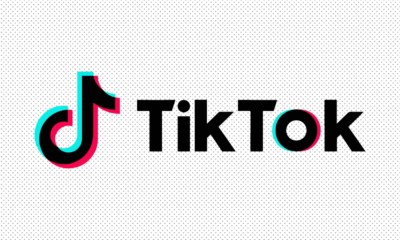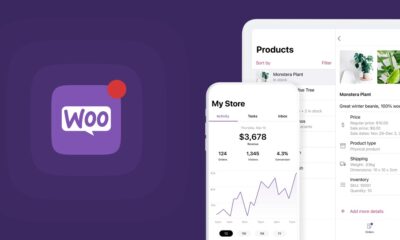General
Project vs. Product Thinking: Why You Need Both to Succeed?


Product thinking and project thinking are two key approaches to product development that are often discussed and debated. While both approaches have their own advantages and disadvantages, it’s crucial to understand that they are not mutually exclusive and that both are necessary for a successful outcome. In this article, we’ll explore the key differences between project thinking and product thinking and how adopting a Jobs to be Done (JTBD) perspective can help improve both approaches.
Project Thinking:
Project thinking is focused on delivering a specific set of outputs within a defined timeline and budget. It’s a highly structured and process-driven approach that prioritizes meeting specific goals and objectives. Project thinking is commonly used in the delivery of projects in fields such as construction, engineering, and software development.
Advantages of Project Thinking:
Here are some of the clear-cut advantages of taking a product-thinking approach:
- Clear Goals: Project thinking helps establish clear goals and objectives, which provides a clear roadmap for the project.
- Measurable Outcomes: Project thinking provides clear metrics to measure progress and determine the success of the project.
- Manageable Timelines: Project thinking helps to manage timelines and budgets effectively, ensuring that the project is completed on time and within budget.
Disadvantages of Project Thinking:
However, there are also some drawbacks to take care of, if you tend to take a too-extreme project-thinking approach:
- Limited Focus: Project thinking can be too focused on meeting specific goals, which can result in a lack of attention to other important aspects of the project such as user experience or design.
- Inflexible: Project thinking is often inflexible, making it difficult to make changes or pivot direction during the project if necessary.
Product Thinking:
Product thinking, on the other hand, is focused on creating a product that solves a problem for the user. It prioritizes user needs and focuses on delivering a product that provides value to the user. Product thinking is commonly used in the development of consumer-focused products such as software, mobile apps, and consumer goods.
Advantages of Product Thinking:
Product thinking can help teams with the following key items:
- User-Centered: Product thinking prioritizes the needs of the user, which results in a product that provides real value to the user.
- Flexible: Product thinking is more flexible than project thinking, allowing for changes and pivots in direction based on user feedback and market needs.
Disadvantages of Product Thinking:
Despite the advantages, product thinking also comes with the following disadvantages:
- Lack of Structure: Product thinking can lack structure, which can result in a lack of focus and direction for the project.
- Hard to Measure Success: Product thinking can be difficult to measure, as it’s not always clear what metrics should be used to determine success.
Taking the Jobs to be Done route:
Jobs to be Done is a customer-centered approach to product development that focuses on understanding why customers use a product and what problem they are trying to solve. JTBD provides a framework for thinking about customer needs and how they use products to accomplish specific tasks or goals.
How JTBD Can Help Improve Both Project and Product Thinking:
Here is how a jobs-to-be-done approach can help improve both the project as well as product thinking and provide immediately better results:
- Better Understanding of Customer Needs: JTBD provides a deep understanding of customer needs, which can inform both project and product thinking, ensuring that the project and product are aligned with customer needs.
- Clear Metrics: JTBD provides clear metrics for measuring success, which helps to focus project and product thinking on delivering real value to the customer.
- Improved Flexibility: JTBD allows for flexibility in both project and product thinking, as it provides a framework for pivoting direction based on customer feedback and changing market needs.
Conclusion:
In conclusion, both project and product thinking are essential for successful product development. While project thinking provides structure and focus, product thinking prioritizes the user and delivers value. Adopting a Jobs to be Done perspective can help improve both approaches by providing a deep understanding of customer needs, clear metrics for measuring success, and improved flexibility. By combining the strengths of both project and product thinking, and incorporating a JTBD perspective, organizations can develop products that not only meet specific goals and timelines but also provide real value to the customer.
In the end, the key to successful product development is understanding that both project and product thinking are necessary and that they should be combined in a holistic approach that prioritizes both delivering outputs and creating value for the user. By adopting a JTBD perspective, organizations can ensure that their products are developed with the customer in mind, resulting in a better user experience and greater success.



 General2 months ago
General2 months agoWhat Is Smart Construction? A Beginner’s Guide





 Technology1 month ago
Technology1 month ago7 Essential TikTok Metrics to Track for Higher TikTok Views in 2025



 Technology1 month ago
Technology1 month agoHow to Send WooCommerce SMS Notifications for Orders

 Model3 weeks ago
Model3 weeks agoTiffany Stratton: Biography, Wiki, Age, WWE Career, Net Worth, Before Fame, Boyfriend



 Technology4 weeks ago
Technology4 weeks agoTop 5 Tips for Using File Uploads in Your WooCommerce Store Efficiently

 Technology3 weeks ago
Technology3 weeks agoWhy Airlines Are Using Virtual Reality Services for Pilot Training



 General4 weeks ago
General4 weeks agoThe Hidden Costs of a DUI & How a Lawyer Can Help You Avoid Them





 Technology3 weeks ago
Technology3 weeks agoExploring TikTok AI: My Experience Making a Video With Only Artificial Intelligence




You must be logged in to post a comment Login